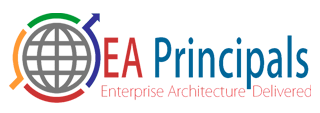In an article titled “Business Architectures in the Public Sector: Experiences from Practice,” several authors discuss the common phenomenon currently being faced by many government organizations. They write, “A critical assessment of the internal processes in many government agencies reveals a substantial level of redundancy and rigidity, as well as a lack of modularity. Moreover, processes are usually organized in (often product-oriented) stovepipe systems. As a result, governments are unable to meet customer needs, coordinate their processes in a coherent manner or offer the transparency modern customers demand.[restrict] There is a need to redesign and modularize government processes. Due to the failing connection between the new customer-oriented business processes, which require specific information to be available at the right moment, and the existing rigid product-oriented processes and information architectures, agencies find it next to impossible to implement services for citizens” (Bouwman et al., 2011, 412).
The organization discussed in this paper is facing this exact challenge in their current operations. This paper presents several directly related issues recently identified during a business process analysis project in a local government organization. The effort entailed documenting the as-is state of the organization and identifying major pain points within the agency. The problems that were detected are preventing the organization from being an efficient, strategic, customer-facing agency, which are the main focus of their long-term goals and vision. Among other things, this study brought to light issues such as the cultural divide between departments, the housing of data in departmental siloes, the lack of internal controls and governance, the lack of metrics, and the use of far too many systems.
While each problem discussed can be solved individually, it is recommended that the agency take on an enterprise architecture initiative to address all of these issues and to prevent further foreseeable roadblocks. All solutions provided in this paper are built around the TOGAF framework, which is a highly used and accepted methodology for implementing enterprise architecture in any organization. TOGAF is centered around an Architectural Development Method (ADM) that is broken out into phases, moving an organization more seamlessly through the development and implementation of an enterprise architecture program.
Solutions for each individual issue are identified below, but at a high level, the main recommendation for the organization is to band together as a cohesive unit to take advantage of departmental synergies in order to simplify processes and share information. This will empower the organization, hold all members accountable, and provide an efficient, customer-centric experience for all involved.
[/restrict]








